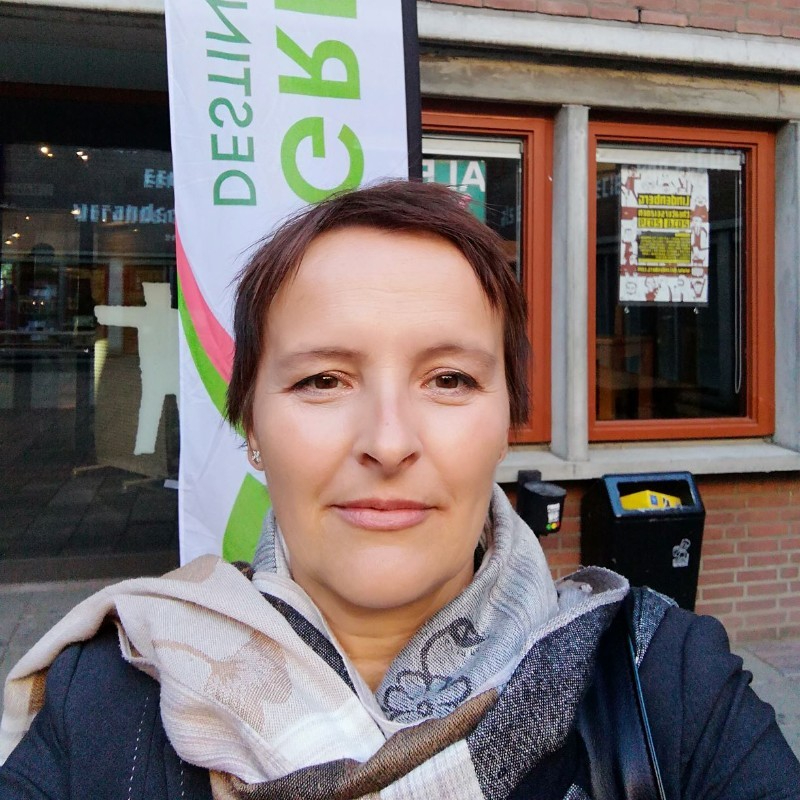Bled, cocooned in tranquil greenery
09.06.2021
Bled is surrounded by greenness whereever you look – the lake, parks or forests.
The forest is a rather complex ecosystem that has several functions, from having a major environmental impact to serving a purely social function. For people, the forest has always been a place to seek peace and inner connection with nature. It is very important to man, although this may not appear so at first glance. Forests retain rainwater, prevent landslides and erosion, humidify the air during dry periods, and also purify the air. The shadows of the trees are beneficial for both people and nature on hot summer days. On such days, Bled’s parks offer shelter, shade and fresh air, and the outskirts of the municipality are lined with lush green forests.
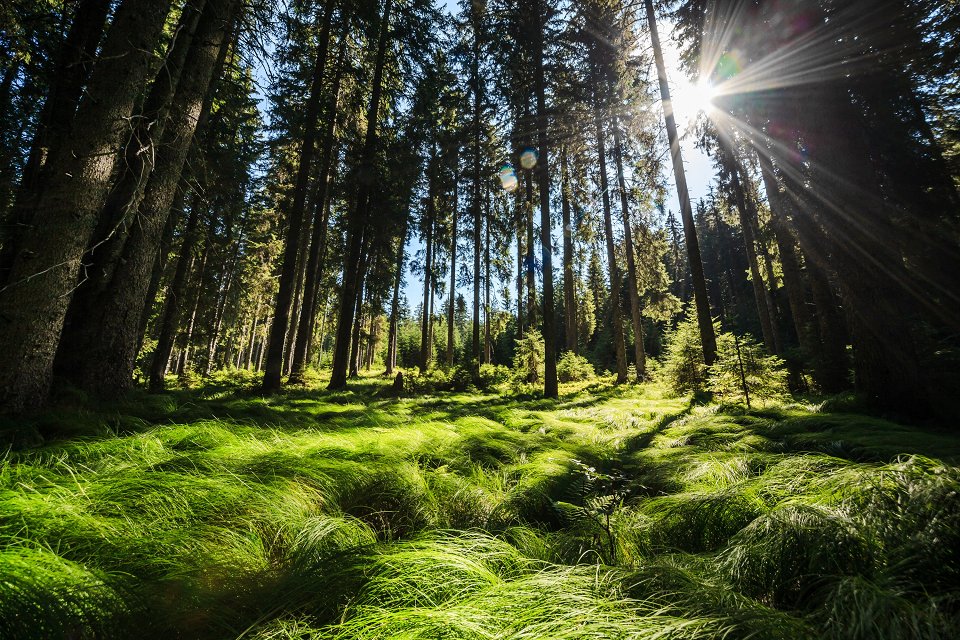 © Aleš Zdešar, www.slovenia.info
© Aleš Zdešar, www.slovenia.info
The Bled Forest Service manages an area that consists of over 63,000 hectares of forest, most of it overgrowing the Pokljuka and Jelovica plateaus. Forests also cover the Julian Alps all the way up to the tree line – these are mostly spruce mountain forests. Mountain forests are especially interesting because they defy the unfriendly alpine climate and are a true example of endurance – life always finds a way!
Slovenia is one of the most forested countries in Europe. When you're in Bled, step outside and look around: there's bound to be a forest that will catch your eye!
The protective function of forests
Did you know that more than 82% of natural areas in the Municipality of Bled is protected? The methods and levels of protection vary, but it is certainly true that forests themselves have a protective function, whether they are officially protected or not. Forests protect the soil from erosion, take care of the ecological diversity and balance, capture and retain rainfall, contain the wind and prevent bank erosion and floods along watercources.
Parks around Lake Bled
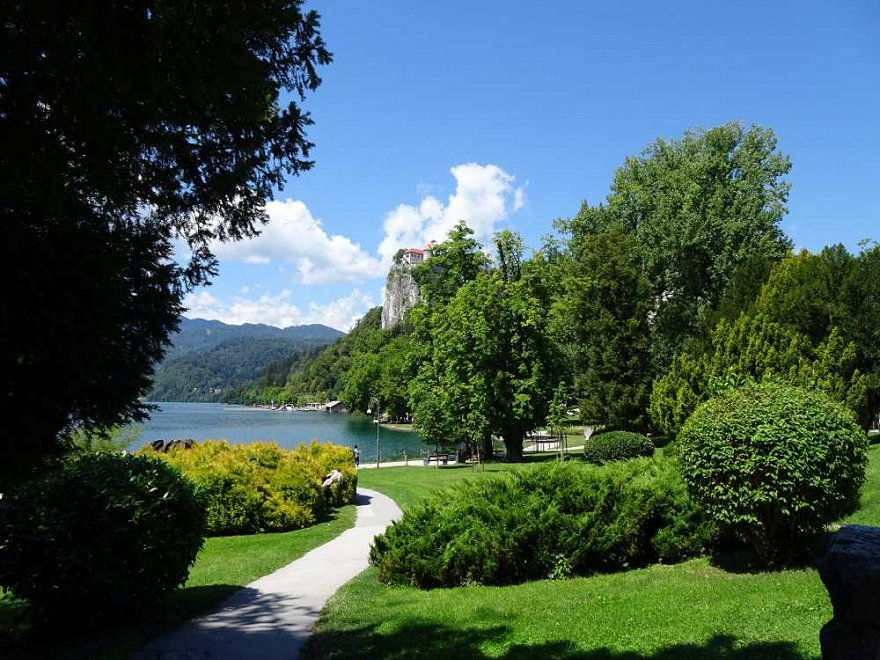 © Živa Rant
© Živa Rant
In the very centre of Bled, special rules of conduct apply in the parks surrounding Lake Bled. Bled’s parks have an ecological function as they are directly connected to the Bled Lake, and therefore Bled kindly asks its locals and visitors to respect this. In Bled’s parks visitors can sit on benches, embrace the lake with all its views, breathe and enjoy the natural beauty. The parks are not intended for sunbathing or picnics; we would like them to be seen as areas where the urban transcends into the natural. As stated by Dr. Jan Bizjak, Bled's chief municipal gardener with a PhD in agronomy, Bled is not a city built of concrete where people would have to search for oases of greenery in city parks; quite the opposite, trees, the colour green and forests are some of Bled’s main attributes. You can see forests wherever you look. And the best thing about all this is that there are many paths leading through the forests, intended for walkers as well as more advanced hikers. Walking paths and hiking trails are well marked, and we are absolutely sure you will find your favourite!
Characteristics of Bled parks
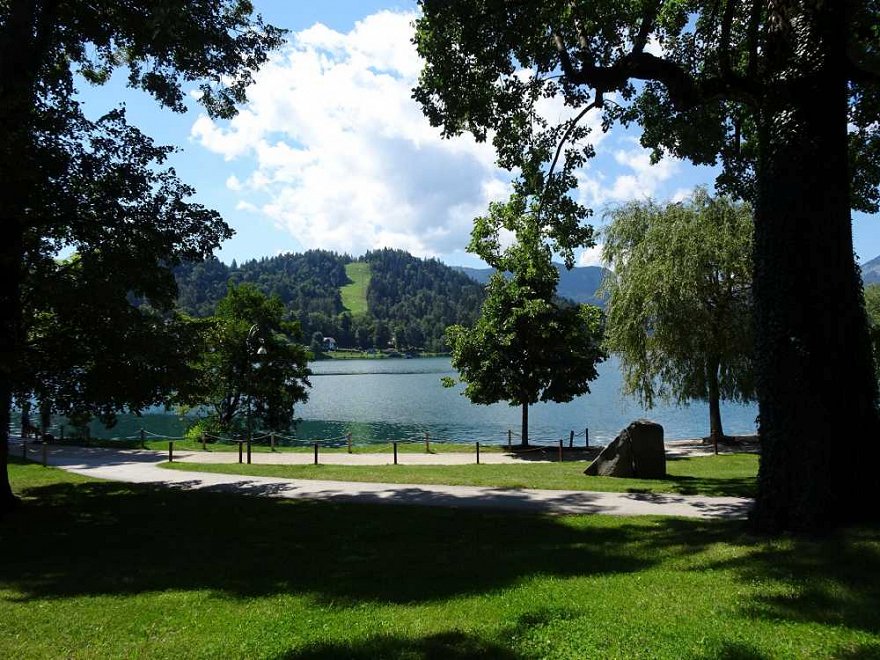 © Živa Rant
© Živa Rant
Bled's central park boasts more than 50 different species of trees, most of which are quite old. In 1890, the Swedish architect Karl Gustav Svensson arranged a park next to Lake Bled, which still lives today. The central park measures roughly 5 hectares, and the types of trees are very diverse. Each older tree has a small sign next to it specifying the species, so that visitors can know what type of tree is providing them with shade and shelter.
Parks are open to everyone!
Something special happened in Bled in 1938. The then-mayor raised the money, took out a loan and bought Bled’s parks from private owners. Immediately, he opened the parks to the public, which was a powerful and remarkable move at the time. Since then, Bled’s parks are accessible and available to everyone. Our task, however, is to preserve them, take care of them, rejuvenate them and pass them over to the next generations. The person entrusted to carry out this important task on behalf of all of us is Dr. Jan Bizjak from Infrastruktura public utility. As he says, he mostly relies on nature and his own knowledge when arranging park areas. A mixture of deciduous and coniferous trees and ornamental shrubs with flower beds and grass offer a beautiful sight. You don’t believe me? Come check it out!
The red Japanese maple in all its glory
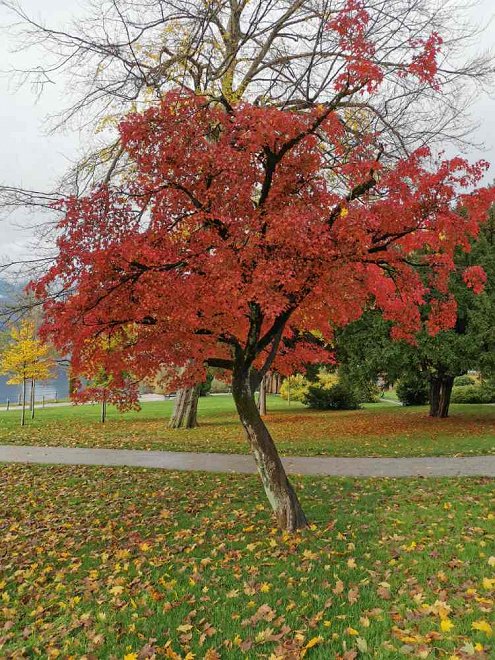 © Romana Purkart
© Romana Purkart
Near the entrance to Bled Castle grew a beautiful red-leaf Japanese maple but it had to be uprooted due to planned construction works. The tree was pointed out to Dr. Jan Bizjak by Peter Vukotič, who knows the plants around the castle really well. In November 2018, Dr. Bizjak found a new living space for this old, exceptional tree in the park below the Lake Bled promenade. At that time we wrote, ”We will only see in the summer if the tree has taken root, and if it does, this tree will be the only adult tree successfully transplanted in Bled.” And it has, hopefully for many years to come!

